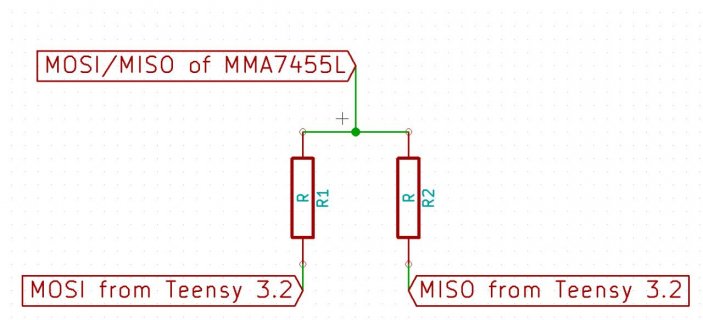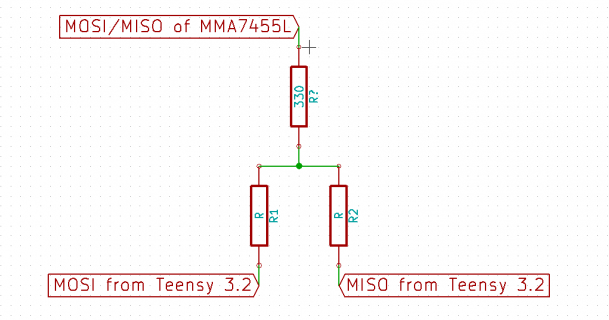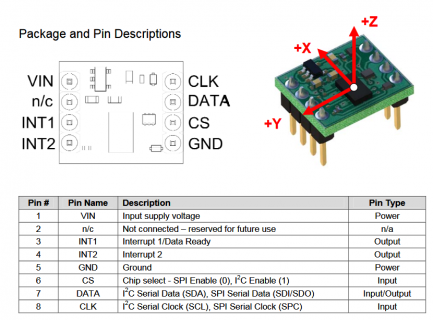michaellangford99
Member
Hello,
I am unclear on how to use a device which has only CS, SCL, and MOSI/MISO (MOSI/MISO are one line tied together.)
The module is the MMA7455l from parallax: https://www.parallax.com/product/28526
As far as I can tell, my Teensy 3.2 can only communicate using one pin for MOSI and another for MISO. Is there a way to use just one, or to put two resistors between the two so that the can both interface to this one pin?
i.e.:

Thanks much
I am unclear on how to use a device which has only CS, SCL, and MOSI/MISO (MOSI/MISO are one line tied together.)
The module is the MMA7455l from parallax: https://www.parallax.com/product/28526
As far as I can tell, my Teensy 3.2 can only communicate using one pin for MOSI and another for MISO. Is there a way to use just one, or to put two resistors between the two so that the can both interface to this one pin?
i.e.:

Thanks much



